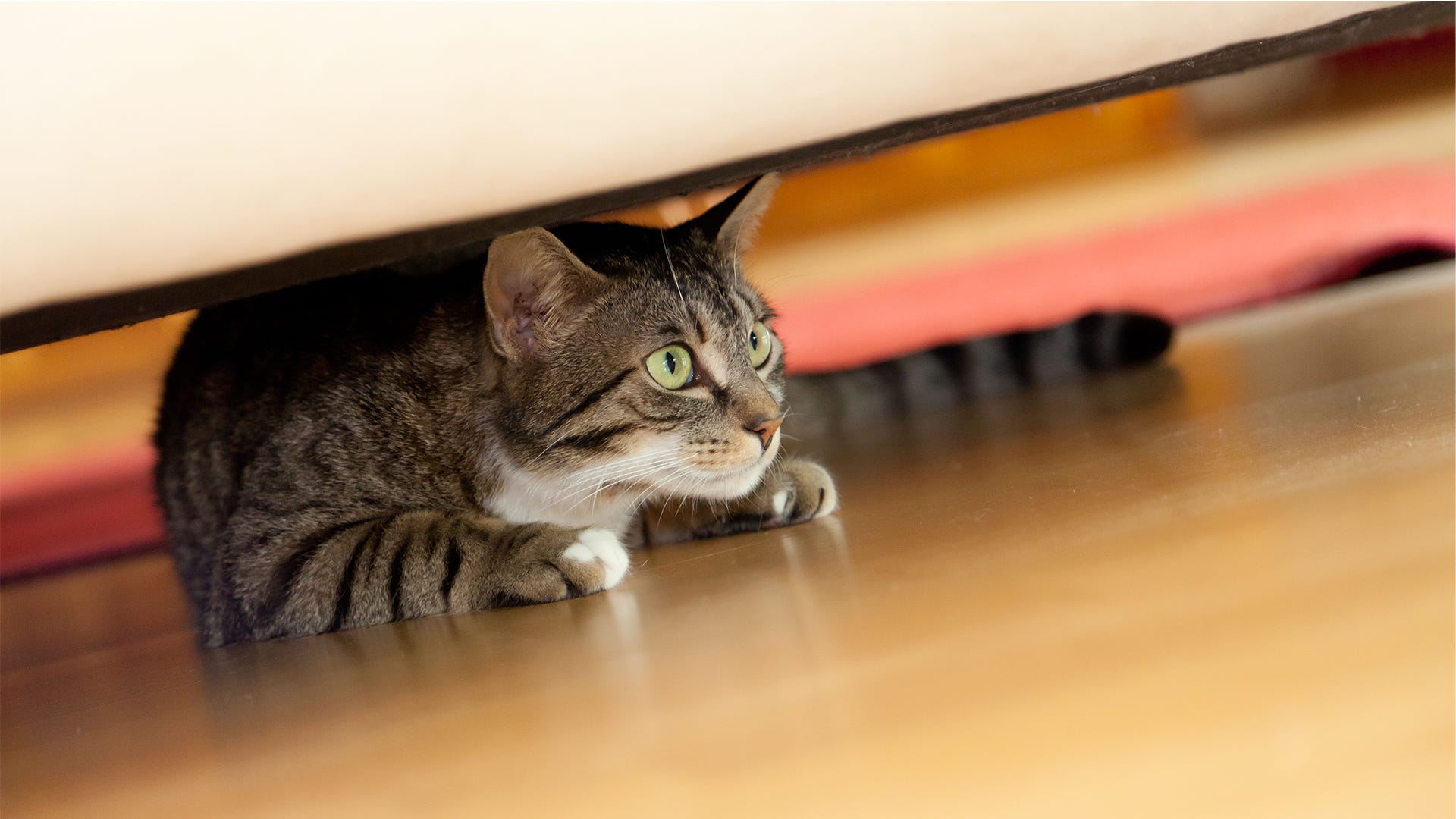
Cats are an emotional bunch! They can’t speak to us directly, but it sometimes feels like they’re really trying. With swishing tails and pivoting ears, they wear their states of mind on the sleeves of their fur coats — so to speak.
The trouble is, really understanding what your cat is trying to tell you can be a challenge. Lots of their vocalizations and body language expressions have several meanings, and can mean anything from “I’m feeling fine today” to “There’s something in the yard … some thing.”
Today, we’re going to take a look at some of the most common cat vocalizations and examples of body language. As you’ll see, lots of these play double-duty, indicating both positive and negative emotions. So while we can point you in the general direction, ultimately, nobody will know your feline friend better than you do. Research suggests that cats in a particular household will develop a “vocabulary” all their own — so listen up, pay attention and have yourself a quality conversation with your four-legged friends.
Cat Behavior: What Your Cat is Trying to Tell You
There are many sounds in your cat’s repertoire of language, and they all have meanings. Here are some common vocalizations you’ll probably hear:
- Meowing — Ah, the meow. Is there anything more cat than the meow? It’s the quintessential cat vocalization — and also the most multi-purpose one. If your cat is meowing at you, it could mean a number of things, including “Hello,” “Feed me,” “Pick me up now,” and “I’m worried — don’t touch me right now.”
- Purring — Believe it or not, a cat’s purr may actually have a healing effect on humans. It’s true! From lowering stress to reducing the risk of heart attacks, our feline friends are clearly looking out for us. The thing is, though, when cats engage in purring, it doesn’t just signal that they’re content — it can sometimes also indicate that they’re feeling anxious themselves. Think of it like a child sucking their thumb for comfort. Yes — purring might actually indicate that your cat is worried about something out of the ordinary, like an intruder.
- Chattering or twittering — Cat owners know all too well how much their furry friends love windows. It seems like some cats would live on a windowsill full-time if they could. Indoor cats in particular seem to look wistfully out the window at swaying trees and sunsets with something approaching a human emotional response. Are we reading too much into it? Possibly. But maybe not!
The point is, if your cat is chattering or twittering while they look out the window, it probably means they’ve located an intruder in the yard — a bird, or a squirrel or possibly another cat. Then again, it might signal a more aggressive response — some cat experts suspect that these noises might be an exaggerated version of the cat’s coup de grâce, as it envisions getting its paws on the intruder in your yard.
- Hissing — You’ve probably seen it — cats in seemingly full-fledged psycho mode with their hair sticking up, mouths wide open and maybe even their back arched and rigid. There’s not really much positive when a cat starts to hiss, growl or spit. It means they’re annoyed, spooked or concerned about something — maybe they’ve had enough of you petting them, or maybe these sense an intruder like a mouse. See if you can determine the issue, but leave the cat alone!
- Howling or yowling — These sound almost like a very long meow and can indicate your cat is in some sort of trouble — potentially stuck somewhere, unsure of where you are, in pain or even disoriented (if your cat is older). If there is an unneutered or unspayed cat in the vicinity during mating season, you may hear them making these noises as well. Bottom line, if your cat is howling, find out where they are!
Body Language: When Verbalizations Aren’t Enough
Your cat’s body language is another extremely useful tool your cats can use to alert you to intruders or other sources of distress:
- Ears — Cats often communicate with their ears. If your cat’s ears are pointed forward, your feline friend is officially “on notice.” It could indicate that they are interested in something in particular, or they’re generally in a good mood. If their ears are pointed backwards or are laying flat along the top of their head, it could indicate that they’re feeling irritable — or worried about something in the area.
- Eyes — Your cat’s eyes, like their ears, also say quite a lot about their mood. If your cat’s eyes are dilated, it could mean one of two things: They’re either feeling exceptionally content … or they’re nervous. In the latter case, dilated pupils indicated feelings of submission, aggression or defensiveness. This is a classic response if your cat has detected another cat in the area.
- Pacing and Pouncing —One of the most obvious ways your cat tells you there is an intruder is when they are trying to hunt them down. For example, if you see your cat sniffing and pacing around your kitchen cabinets you may have a mouse behind them! Help your cat to catch the invader by placing a mouse trap in the back of a few of your cabinets.

Have a Conversation Today!
As you can see, you really can have a conversation with your cat! It might take some practice to pick up on the nuances and hidden meanings, but hopefully we’ve helped you learn a bit more about how to understand cats.
While you’re here, remember to sign up for our newsletter, and tell us about any experiences you’ve had with your cat tipping you off about intruders when you visit Victor® on Facebook!








